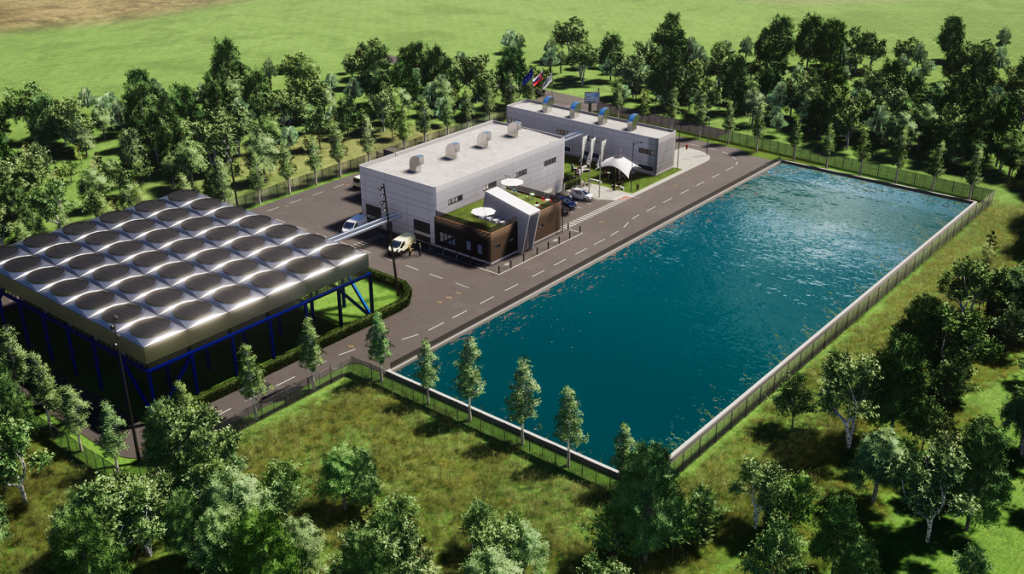Feasibility study underway for geothermal power project in Slovakia
Preparatory work ongoing for planned geothermal power project in Presov, Slovakia by developer PW Energy.
Preparatory work is ongoing for a planned geothermal power plant project at Presov, Slovakia, as confirmed in an article featuring an interview with Michal Masek, project manager at developer PW Energy. We reported on the project in June of this year.
The geothermal power plant project consists of several phases. It is currently in the preparatory work, which consists, among other things, in the assessment of the plan within the EIA process, ie the environmental impact assessment.
“It is a green, clean resource that will have no negative impact on the environment. We therefore assume that we could have a final opinion on the EIA in June 2022, “said Michal Masek, project manager of the Slovak company PW Energy , which is implementing the project.
At that time, they could start the first exploratory well. After its evaluation, production (for pumping water from the ground) and reinjection wells (for pushing water back into the underground collector) will follow.
This system of operation with constantly recirculating water supports the principle of sustainability and is in line with a sensitive approach to the environment.
“It’s a long-term sustainable resource, because we push the water we drain from the ground back into that natural underground reservoir, where it heats up again. It is a closed cycle that, with proper operation, can serve for decades, ”explains Masek.
The question is whether the inhabitants near whose dwellings the construction of the power plant will take place should not be afraid of a reduced quality of life.
“There is no need to worry at all. The process of drilling is technically very well captured and within the technology and knowledge of the people who work in this area, it is a controlled and safe process. Nothing has ever happened in the construction of conventional geothermal wells. ”
According to Masek’s words, there is no danger, not even potential.
“In general, since the water flows in high-quality steel casings, which are concreted in, it does not come into contact with the environment, the air or the soil. It is a closed cycle of production and re-injection wells. In the heat exchanger of the power plant transfers heat so-called working fluid, which is a fluid with a lower boiling point than water from a geothermal source. The working fluid in the device evaporates, creating pressure and spinning the generator turbine. Subsequently, the steam cools down, condenses and goes back to the circuit to warm up, ”the project manager described the process.
As he pointed out, visually visible water vapor will not be created from the chimneys, as a modern, closed type of air cooling will be used. “It’s a device that takes up minimal space, but generates electricity and residual heat very efficiently.”
Experience from the past
Currently, while waiting for the EIA, discussions are taking place on various sides and investors’ interest in heat supply is being ascertained.
A feasibility study is underway. Where else could the residual heat from the power plant be used in practice?
“They can be greenhouses, recreation, pool heating, fish farming, wood drying, food processing, pasteurization, everything where the temperature from 65 degrees below can be used,” says Masek.
“This spectrum is very wide, which is also reflected abroad, where the residual heat produced in an environmentally friendly way is used very intensively by investors and companies who really see the potential in it.”
The choice for our region did not fall by chance, it was preceded by surveys from 2009 by a Canadian company that is primarily engaged in gold mining.
And since there is a certain connection between gold and geothermal energy, they decided to look for geothermal resources to see if there was potential for gold in these areas.
In both the Presov basin and the Ziar basin, there was volcanic activity in the past, which is another prerequisite for the occurrence of geothermal resources.
“Slovakia was quite intensively researched by the then government during the socialist era, the comrades drilled our country like an Emmental, thanks to which we have a huge amount of data in the archives,” Masek explained the data.
In 2019, the current Slovak investor carried out his own seismic surveys. Based on already known data, they specified the character of the area, including underground layers and structures.
“In Presov, it helped us to delimit an interesting area of ??several square kilometers, which we focused on, and where we could specify what areas and depths we will target wells.”
Source: My Saris/ SME


















